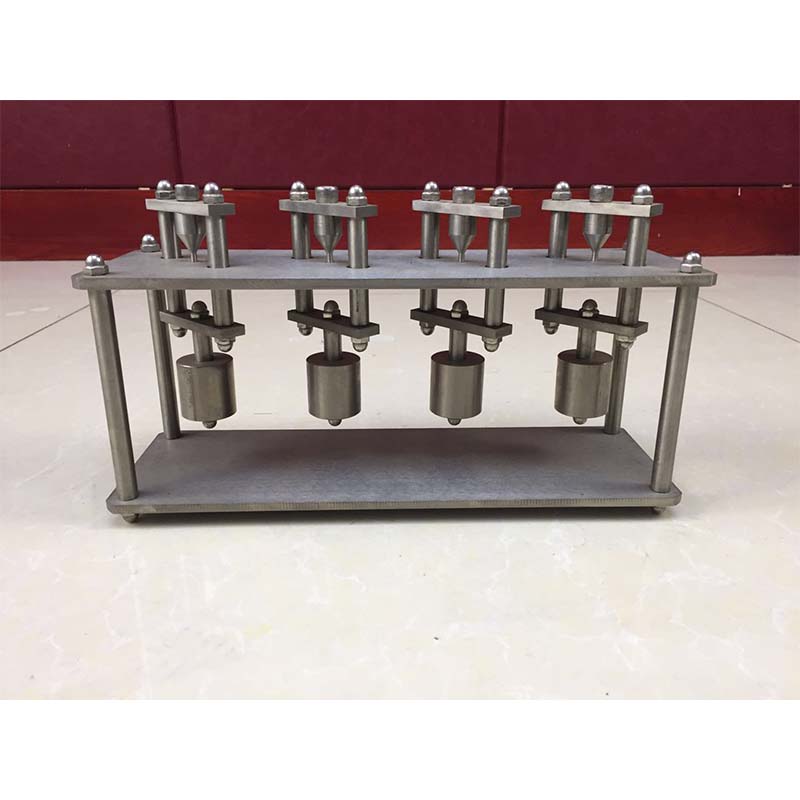smoke density chamber test
Understanding Smoke Density Chamber Testing
Smoke density chamber testing is a crucial assessment utilized primarily in fire safety research and material testing. This method measures the amount of smoke generated by a material when subjected to a fire, providing valuable data on the potential hazards posed by various substances in the event of a fire. As fire can spread rapidly and unpredictably, understanding smoke density is vital for safety regulations, building codes, and the manufacturing of materials used in construction and furnishings.
The Importance of Smoke Density Testing
In any fire scenario, smoke can be far more dangerous than the flames themselves. Smoke inhalation can lead to acute health issues, including respiratory distress and suffocation, and can complicate the evacuation process. Effective smoke density testing helps manufacturers, regulators, and safety professionals assess the risk levels associated with specific materials. It is essential not only for ensuring compliance with existing fire safety standards but also for developing safer materials for construction and interior design.
The Smoke Density Chamber
The smoke density chamber is a specialized apparatus designed for conducting these tests. It replicates the conditions of a fire environment while controlling variables like temperature and airflow. The test typically involves exposing a sample material to a flame under controlled conditions. As the material burns, the smoke produced is collected and analyzed.
One of the key parameters measured during the smoke density test is the Optical Density (OD), which reflects the light attenuation caused by the particulates in the smoke. This measurement allows researchers to quantify how dense the smoke is and provide a comparative analysis of different materials. Furthermore, the smoke density index (SDI) can be derived from the OD measurements, providing an additional layer of insight into how smoke emissions will behave in real-world scenarios.
Testing Standards and Protocols
smoke density chamber test

Various standards govern smoke density chamber testing to ensure consistency and reliability across different testing environments. One of the most recognized standards in this area is the ASTM E662, which outlines protocol for measuring the specific optical density of smoke generated by solid materials. This standard specifies the apparatus to be used, the preparation of test specimens, and the calculation methods for determining smoke density.
Adhering to these standards not only ensures that data is reproducible but also facilitates comparison between different materials tested under similar conditions. Moreover, such standards are periodically reviewed and updated to reflect advancements in materials science and fire safety research.
Applications and Implications
The implications of smoke density testing extend beyond just a singular test environment. Various industries, including construction, automotive, and aerospace, utilize these tests to ensure their products meet safety regulations. For instance, building materials are often subjected to stringent smoke density requirements to minimize hazards in residential and commercial properties.
Additionally, the results from smoke density tests influence insurance policies, liability considerations, and government regulations related to fire safety. As urban development continues, the presence of high-density materials in urban environments raises important questions about public safety and the responsibilities of manufacturers and builders.
Future Directions
With an increasing emphasis on sustainability and eco-friendly materials, the fire safety testing industry must adapt to this trend. Emerging materials often behave differently when subjected to fire, necessitating ongoing research and revisions to testing standards. Furthermore, advancements in technology offer the potential for more sophisticated testing methods that can provide real-time data during fire incidents, thus improving first responder strategies.
In conclusion, smoke density chamber testing plays a fundamental role in enhancing our understanding of fire safety and material performance. By carefully assessing and regulating the smoke produced by various materials, we can work toward creating safer built environments that protect both lives and property. As fire safety regulations evolve, the importance of accurate and reliable smoke density testing cannot be overstated, making it an essential component of fire safety and material science today.
-
Why the Conductor Resistance Constant Temperature Measurement Machine Redefines Precision
NewsJun.20,2025
-
Reliable Testing Starts Here: Why the High Insulation Resistance Measuring Instrument Is a Must-Have
NewsJun.20,2025
-
Flexible Cable Flexing Test Equipment: The Precision Standard for Cable Durability and Performance Testing
NewsJun.20,2025
-
Digital Measurement Projector: Precision Visualization for Modern Manufacturing
NewsJun.20,2025
-
Computer Control Electronic Tensile Tester: Precision and Power for the Modern Metal Industry
NewsJun.20,2025
-
Cable Spark Tester: Your Ultimate Insulation Assurance for Wire and Cable Testing
NewsJun.20,2025
 Copyright © 2025 Hebei Fangyuan Instrument & Equipment Co.,Ltd. All Rights Reserved. Sitemap | Privacy Policy
Copyright © 2025 Hebei Fangyuan Instrument & Equipment Co.,Ltd. All Rights Reserved. Sitemap | Privacy Policy
